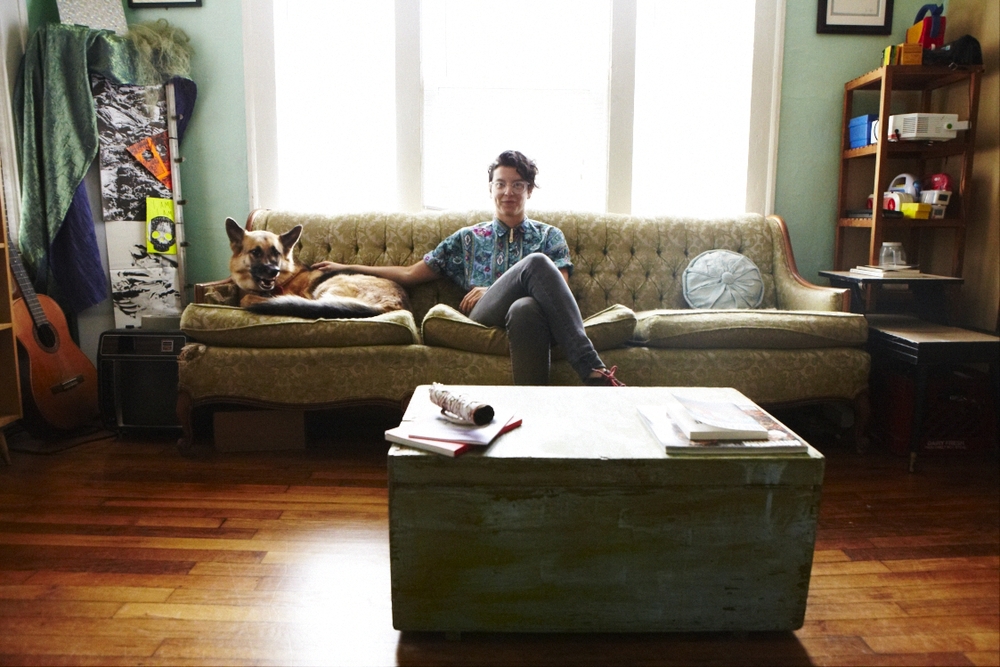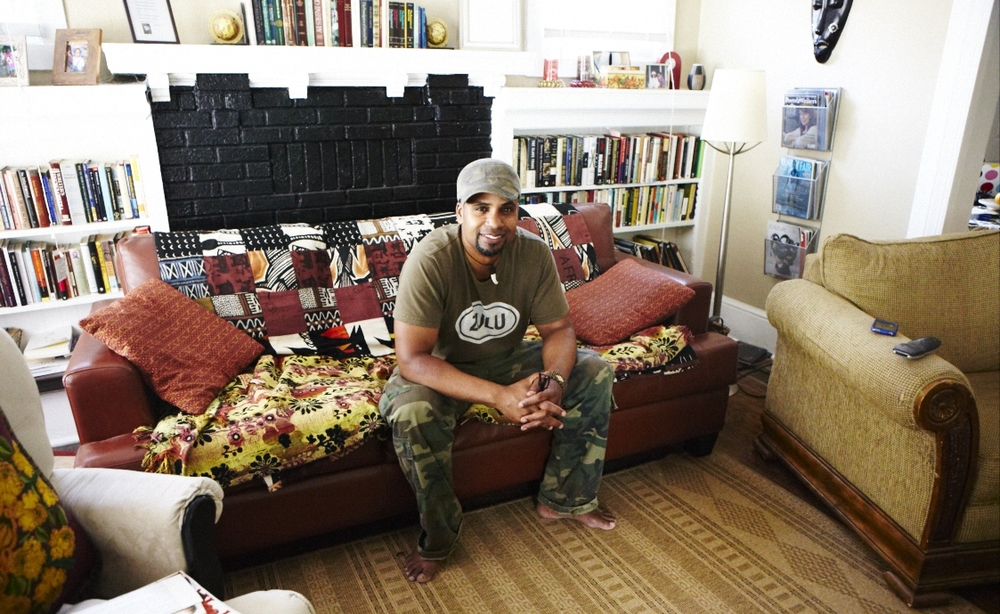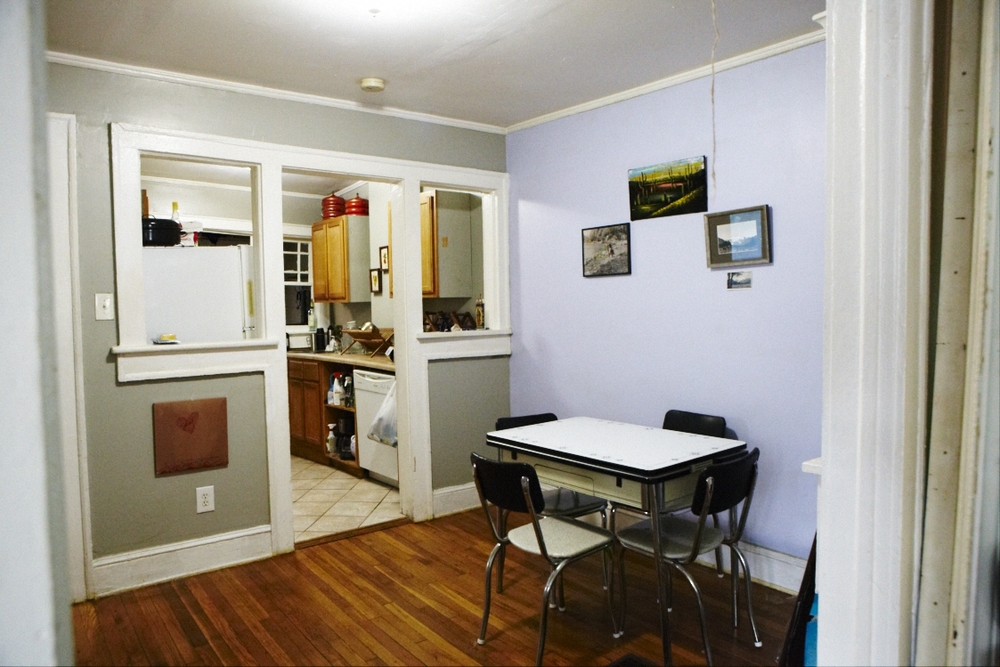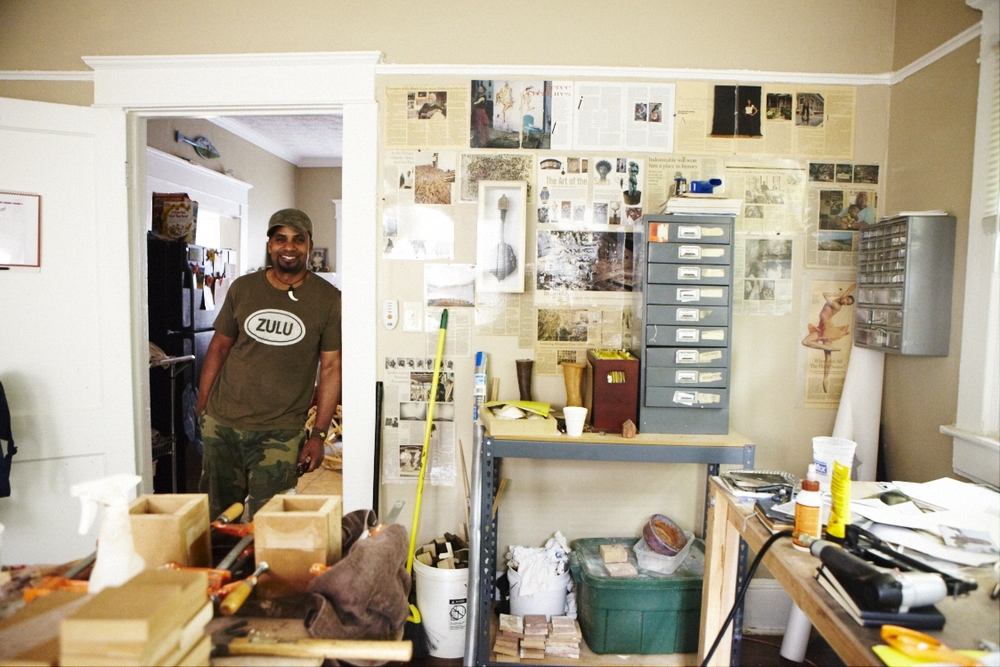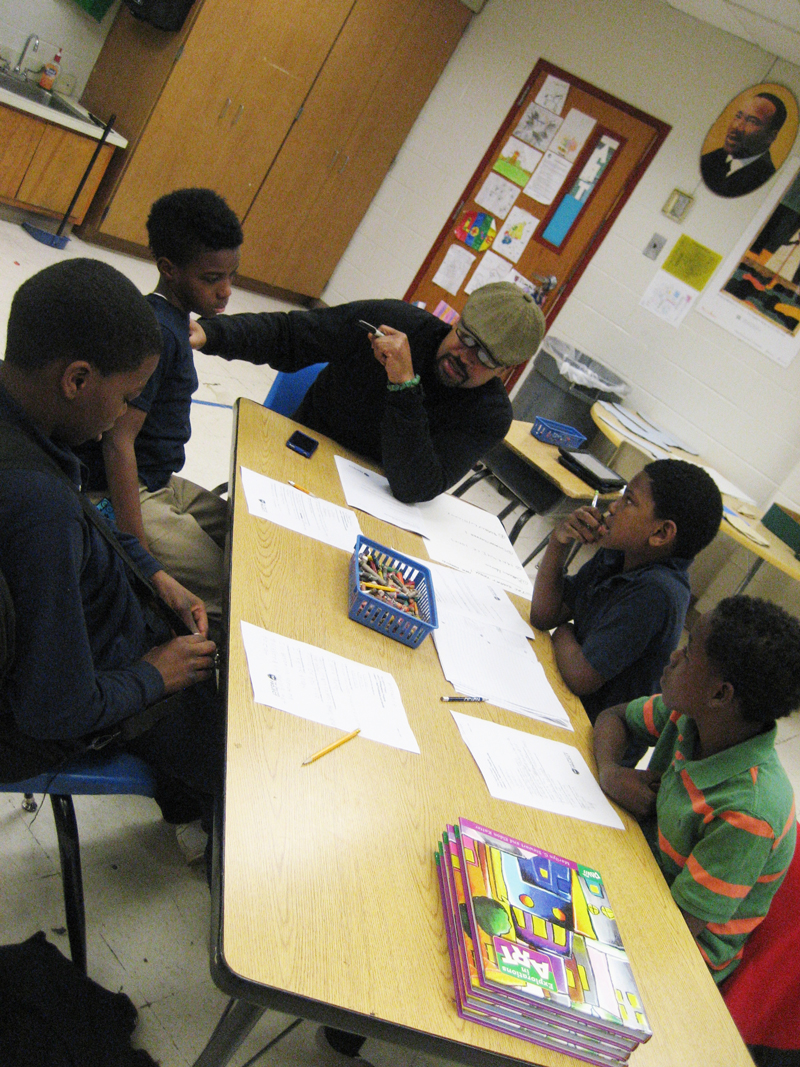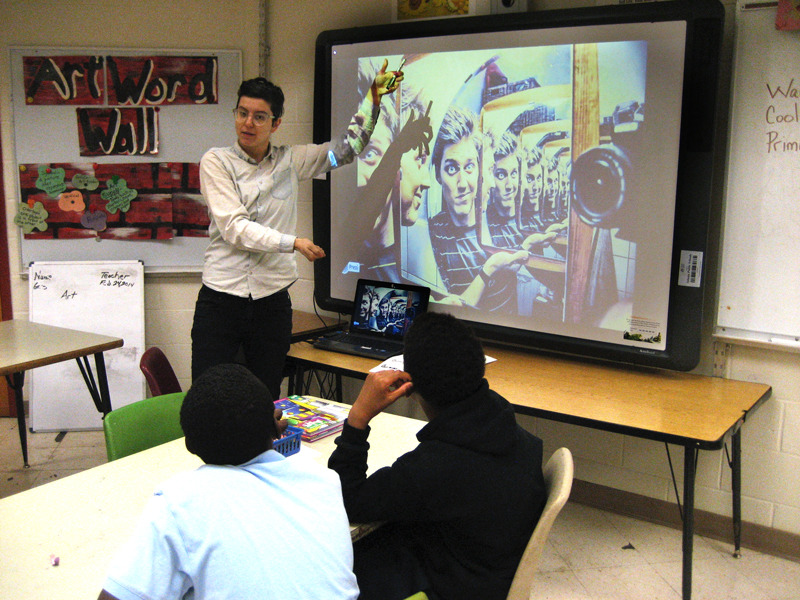TCP's newest crop of resident artists Joseph Dreher, Meta Gary, Meredith Kooi, William Massey, Shanequa Gay, Margaret Hiden, John Tindel, Scott Silvey, and Rachel Garceau hanging out at the Goat Farm Arts Center. photo by: Neda Abghari
Since 2011 The Creatives Project has provided studio space to working artists through its Artist-in-Studio program. As the 2013-2015 studio residents prepare to take their experiences at The Goat Farm Arts Center on the next phase of their artistic journeys, a new crop of talent is ready to move in. TCP welcomes its largest group of studio residents yet as the 2015-2017 group (Joseph Dreher, Shanequa Gay, Rachel Garceau, Meta Gary, Margaret Hiden, Meredith Kooi, William Massey, Scott Silvey and John Tindel) gets creative in its new studio spaces. As they prepare to move in, each new studio resident discusses how this opportunity will help them creatively and professionally.
How will becoming a TCP artist-in-studio most benefit you as an artist and professional?
Having dedicated studio space is always helpful to an artist but what is even more valuable is the time spent with other artist working side-by-side sharing space and time together and allowing for new opportunities for teaching and learning from each other and the possibility for cross pollination and collaboration.- Dreher
The TCP artist-in-studio residency will help to make the dream of being a professional artist a reality. To have a space of “my own” to paint and work and create in just really means everything to me. Artists are provided with networking opportunities, youth to artist volunteering, artist development, and open calls. The program is literally an artist’s paradise. -Gay
In the past two years, my work has made a dramatic shift from being presented on pedestals in galleries to existing as very temporary outdoor or site-specific installations. As the porcelain forms grew in size, I began to feel that the whiteness of the shapes needed an environment that would offer contrast such as a forest, a river, a brick building, etc. I now consider what it might be like to return to the gallery and embrace the possibility of the subtleties of filling a white space with white objects. The more I think about it, the more it excites and inspires me—I see porcelain umbrellas hanging in layers so thick you can’t see the ceiling, or piles and piles of porcelain spheres or walnuts pouring out of a corner, or porcelain tiles with extremely quiet textures or patterns covering vast sections of wall. A residency through The Creatives Project will grant me exhibition space to explore this way of presenting my work. It may also open up avenues with new audiences and potential relationships with galleries and museums in Atlanta which could continue to grow over the course of my career.- Garceau
Connection to other artists is so important in making work. That is often difficult to maintain regularly after school. I think that this residency will offer a network of other working artists with which to discuss or collaborate. Furthermore, it will provide expose and extend a connection to a local art -Gary
The TCP studio residency is beneficial to because it creates the opportunity for me to engage with my process, peers and the community in a more meaningful way. Through creating trust and respect for each other (residents), we can create the most out of an opportunity such as this. I am not the same artist I was four years ago. I’m not the same artist I was a year ago, or even six months ago. Ideas and inspiration are always evolving. TCP allows the space and support for self-discovery as an artist by offering a space to interact with process, experimentation and dialogue with peers. It also opens a path for influence from the greater community, which is important for me as an artist. - Hiden
I think that being a TCP resident will benefit me in two major ways. It will help me progress in my teaching skills and also give me the space to experiment. Professionally, this opportunity will open up a new avenue for me – I will soon have experience teaching an age group that I have not yet. I anticipate that this will broaden my understanding of what it is to teach, which is exciting for me. Being given a space to live and work is really incredible – this helps relieve some of the burden of living, which hopefully will create a plethora of awesomeness! -Kooi
Access to space, resources, and networks are vital vertebrate to the backbone of being a professional artist. The Creatives Project cultivates and provides all of these. I have been working on my large sculptures in tight, non-conducive spaces for the past 3 years; but not for long! My artwork and mental well-being will flourish in such a works pace that I’ve not been able to afford before. Furthermore I am elated to be working along-side such a wide array of other artists. - Massey
Directly stated, it will give me a place to work within a community of other creative individuals. While living abroad I did not have the benefit of a constant and mutual exchange of ideas. I'm excited to be in a place where original thought can flourish.- Silvey
Being a TCP artist will benefit me in my own journey through this creativity filled world. Professionally I plan to discover new techniques and skills that I don’t already know and apply them to my ever mutating work. Neda, has always been able to put together some great artists, educators and influencers. I want to learn from them and also share the knowledge I have gleaned from over 15 years in the Atlanta art game. I don’t want to be a fine artist. I want to be a creative. - Tindel
As a TCP artist in residence, how do you plan to utilize this opportunity? How will you represent TCP? What personal projects do you have planned to complete during your residency?
I plan on giving to the community by creating projects that celebrate people and encourage collaboration and personal expression. By making art that is inclusive and interactive it invites everyone in to participate and share in the experience. I hope to teach and mentor young artists and especially artists with special needs. Being the father of a special needs child I have a unique understanding of the challenges they face everyday and I hope to use the knowledge to help others.- Dreher
I will use this opportunity to create dope art. I will represent TCP through dope art. #kanyeisms
I want to continue to explore and expand my present body of work, through study, and research in this new creative open studio space. I will also be creating new works for a group show in Munich, Germany, as well as an upcoming solo exhibition state side in 2016. -Gay
Over the past year, since moving to Atlanta, I have shifted time spent in the studio to mostly make commissions and run production of utilitarian wares in order to make ends meet. Being freed from this constraint will allow me to get back to making the work that I am driven to make—sculptural, installation-based work.
Teaching is a fluent language to me—it comes as a natural rhythm. I connect through sharing and wish for this aspect of my career to be life-long. Again, being new to a city, I have not yet been able to find structured opportunity to do so, and this position as an Artist-in-Studio will start me on that path—it will give me a platform to not only continue teaching and sharing in ways I have done in the past, but also allow me to test-drive my ideas of integrating movement and making. - Garceau
One nice aspect of a residency is a level of accountability. Being offered an opportunity like this will motivate me to continue working at a consistent pace to be able to take full advantage of the opportunities the residency provides. - Gary
I’m excited about the opportunity to also share my love for education and helping others understand the power of art through the various outreach programs that engage with the Atlanta community. There’s nothing more joyful than giving others the tools and aiding in planting the seed that lies within young artists in order for them to express themselves with confidence.
I have so many projects started - either in the stages of mere ideas or at the drawing board of the process. Seeing some of these projects to fruition will require the feedback, space and discipline TCP will lend me through this residency. I plan to refine and complete a photographic project dealing with existing imagery that I have had a relationship of push and pull with for quite a while now. Seeing it to completion will allow me to have the breathing room I need to explore not only new ideas but to put to action my eagerness to engage with new media. TPC is a lengthy and committed relationship. This is the best part! Wonderful things take time and this longer duration will support my need as an artist to take risks, fail, learn, start over and see my ideas to fruition in a solid manner. - Hiden
I plan to use this opportunity as an educational platform to encourage younger artists, especially girls, to explore and experiment with new media, performance, and other “non-traditional” mediums. I hope that in some way I can be a proponent for new media and transmission art work that is critical of itself and committed to complicating codified gender roles in artistic practices.
I have many personal projects in the works that involve my solo visual and performance work but also collaborative curatorial ones. One of my main goals is to continue to develop my current body of work to be ready for a solo show in the next year. -Kooi
Being able to teach, collaborate, critique and problem-solve with the other creatives of TCP will be a priceless and massive boost to widening artistic scope and tenacity. Furthermore, the most important aspect to art in my opinion is sharing it with and empowering others through creativity; connecting with Drew Charter School is a tremendous aspect of this opportunity, I can’t wait to get in there, empower the children, collaborate with young minds, and see how it unfolds. When it comes to my own work, I will utilize this opportunity to make larger outdoor works, pour more into the creative process without the distraction of limitations such as space. I envision making sculptures that will be integrated into/onto large buildings. Though my most expansive project arising is the start of a non-profit, Art for One, which liberates the socially and physically disconnected by gathering diverse communities that foster healing and reconciliation through creative engagement. TCP will promote and provide essential networks and space, mentally and physically, for momentum to gain exponentially in all aspects of my art/work/life- Massey
I am eager to begin making three-dimensional work again. Having a studio at The Goat Farm will allow me to finally realize a wealth of ideas I only investigated on paper during the past nine years abroad. I probably have five or six solo shows just waiting to be made. I always endeavor to do my best and act in a professional manner and I hope to show that TCP is an organization which supports this. I'm also excited to work with the various outreach programs to promote the idea that creativity is not for artists alone but a central part of all professional fields and the act of living itself.- Silvey
I want to create like I have never before. Break my boundaries and open up new ones. I will use my studio as a place that I can show my progress, thoughts and work to others. Broadcast from a beacon that creativity is forming and coming alive from myself, the goat farm and TCP. I want to also be influenced. By the amazing artists that TCP has allowed to come together in this way. We have the opportunity to explore the diverse corners of all types of arts.I’ll tattoo TCP on my forehead… maybe. I want to help TCP grow, educate and inspire the upcoming generations. I want to let my “art world” know that TCP gave me a chance and a studio. I want to create work inspired by this experience. I will let everyone know that TCP has given me 2 years to create and during those two years, TCP will be in all my promotion and work.
I am open for anything. I have been on the Atlanta art scene since 1999 and I want to start exploring again. I know that I want to explore a non-narrative abstract style for some paintings, but i also want to gain skills that I can turn these ideas into sculptures or even the ever-so-trendy installation. The goat-farm and TCP allow me to explore the possibility of where I can take my artistic style… black smithing to add something to a sculpture, porcelain to create delicate forms, new approach to color for an abstract piece, dialog between creates that inspire visual ideas… it is endless.- Tindel
Do you anticipate collaborations with the other studio residents?
I not only anticipate it I welcome it and encourage it. We have so much to offer each other in experience, knowledge and talent that it seems only natural to share it.- Dreher
Gee, I hope so! I would love the opportunity to create and connect with the other residents to make something from multiple perspectives, thought processes, backgrounds, cultures… I mean who doesn’t want a creative potluck!? Genius is developed from such connections. - Gay
As a non-native Atlantan (and a non-native Southerner, for that matter), I view this city and this region from a different perspective and with fresh eyes. I see beauty and opportunity where others may see neglect or change. I want to learn more about the city I live in by knowing and understanding the people who populate it. I arrive with a desire to learn about the diverse populations and histories of these people and this place and welcome—in fact, long for—ways to engage and share my own experiences and backgrounds and find where these things overlap and where they differ—to find the root of humanness that connects us all. - Garceau
I LOVE COLLABORATIONS!!- Gary
I would be thrilled over the opportunity to collaborate with the other residents. Each of us offers a unique perspective and the merging of ideas, materials and processes can be a magical thing. Collaboration is important because not only does it challenge interpersonal and communication skills, but it also helps for each artist to refine and hone in on their own strengths and take on a new perspective that evolves through a collaborative effort. - Hiden
I SURE HOPE SO!- Kooi
Yes, there are such diverse media and creative realms accounted for within this group – I know the collaborations will be abundant, out-there, and un-anticipatable! I am all about combining extremely different things/materials/ideas and finding relationships between them. I hope to collaborate with each of the other artists throughout our TCP residency.- Massey
I certainly hope so! So many new and unique ideas can come from the unexpected juxtaposition of backgrounds and concepts. I truly look forward to seeing what the other artists have to share.- Silvey
I will collaborate with anyone who will have me. Collaboration is a great experience. From being TINDELMICHI to collaboration with my kids, it is a simple way to mutate and form ideas, challenge your status quo and break creative blocks. I push and encourage collaboration. -Tindel
How important do you think programs like this one are to the creative process and the local art scene?
I have seen my own son go from a shy teenage artist drawing in his sketchbook alone in his bedroom to becoming part of a welcoming community of artists. By sharing his work and getting support through their interest and instruction he has built confidence as an artist and as a human being. Art is a powerful thing and it has literally saved my life and strengthened my family- Dreher
Programs like The Creatives Project (TCP) are vital because they help to fill a void here in Atlanta called “not enough funded support for the working artist.” They fill this void by providing accessible opportunities for local artists to survive and thrive as creatives- Gay
Whether it is offering artists studio space or providing a platform for artist and community networking, programs like this are incredibly valuable to working artists, as both are essential to full career development. Likewise, TCP in particular, offers involvement back to the community to kids who may one day be part of the residency themselves. -Gary
Studio space can be hard to come by and, for me, not possible to fund. It is great that a program is set up to facilitate artists with their general process instead of merely funding specific projects without considering space requirements and conditions. Having a studio is an important factor that allows experimentation to flow.
Programs like the Creatives Project are crucial to the creative process, not just for the individual but the holistic growth of the arts community. There are so many talented artists floating around the local art scene that sometimes don’t have the opportunity to be seen or heard. The local art scene is inundated with talent that is unknown and these are the kinds of opportunities that give artists the chance to let their voice be known. Don’t you think everyone should have a platform to respond to humanity through their artistry and give that gift back to the world? It’s mutually beneficial between the artists and the community at large. -Hiden
I think that a program like this, which in exchange for studio space the artist-in-residency educates students, is extremely important because it encourages artists to connect with younger artists. Today, it seems that mentorships are not prioritized, which can be a huge disservice to an art community. To me, these two things – the providing of space and educating future generations of artists – are countermeasures to an arts ecology in disrepair- Kooi
Programs such as TCP are undeniably vital. It is far too common for artists to feel undervalued, under-resourced, and unsupported. When this happens, the culture of a specific place suffers. The Creatives Project completely diminishes those notions and actually reverses them.
Culture is in large part dependent on art. If artists are supported by programs like TCP, the local culture is enriched, society benefits, and the community is enlivened and refreshed. All because artists are granted the empowerment of support. Not to mention it’s just hard for an artist to get his or her feet off the ground while investing time and finances into passionate work that is not always immediately financially fruitful. That room-to-breathe is exponentially beneficial to artists and invigorates work that may never have been produced otherwise. -Massey
They are not only important, but essential. Programs like this provide access to space and relationships that are not always easy to come by. They are a great motivating force in the lives of artists who sometimes feel pushed aside by the world at large. Programs like this show that there are people who care about making the world a richer and more interesting place. - Silvey
For the creative process these programs are priceless. They allow artists that wouldn’t have come together to start thinking and creating together. If that builds an art scene, I don’t know, I am not the best to ask on the scene thing. I know as a creative scene, Atlanta has done awesome. However, to me a vibrant art scene has to have collectors buying the work. I want to bring in more collectors and people actively buying the work. Creativity can be a career.- Tindel
interview by Jonathan Williams / WrestlingWithPopCulture
photography by: Neda Abghari




